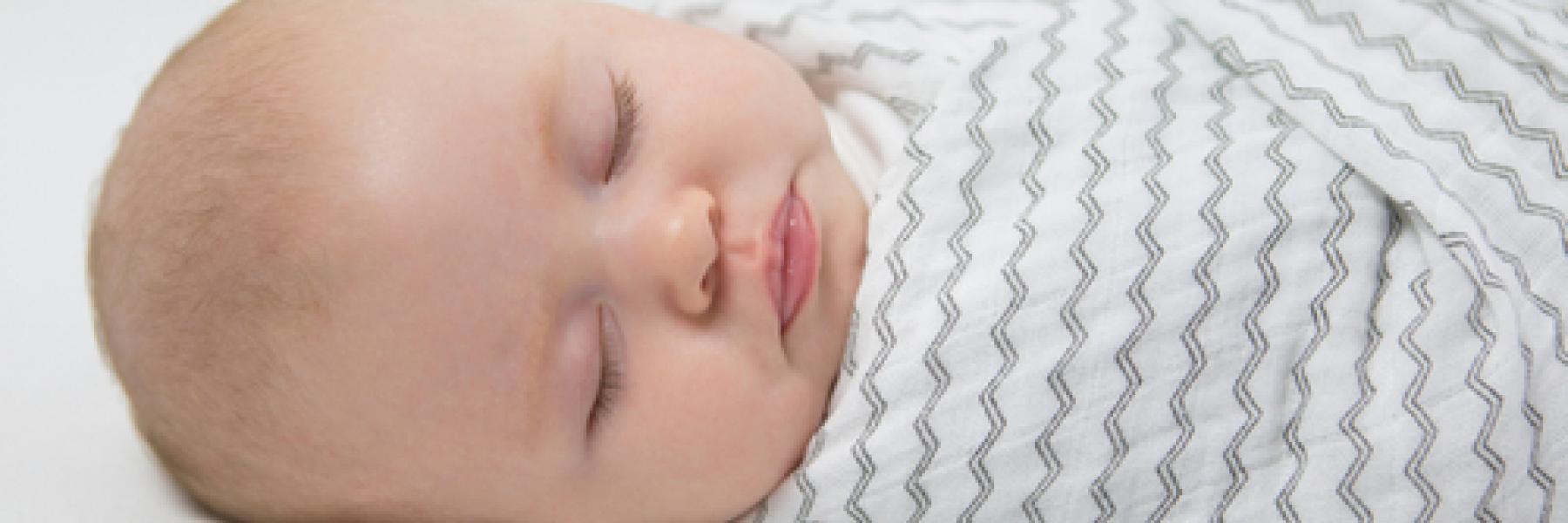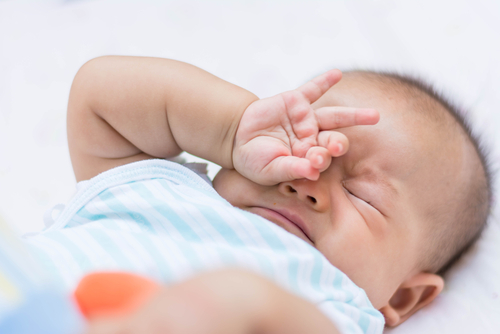
Sleep
Sleep is essential for children to grow, learn and develop. Each baby will have their own sleep pattern, some sleeping for long periods, others in short bursts. Forming good sleep habits, such as consistent bedtimes, wake times and calming bedtime routines in the first year of life can help you to keep healthy sleep practices with your children as they grow.
How do I know if my baby is tired?
Your baby will have their own tired signals that will show their need for sleep. The more time you spend with your baby, the better you will become at recognising these signs. Common signs include:
-
 Jerky movements
Jerky movements -
Clenched fists
-
Eye rubbing
-
Clinginess or fussiness
-
Yawning
When you see these signs, it is time to reduce stimulation and get your baby ready for sleep. If your baby becomes grizzly or begins crying, they may be overtired, and this can make it harder to get them to sleep.
How much sleep does my baby need?
Each baby will have different sleep needs, so learning their tired signs will help you to know how much your baby needs. See the table below as a guide for awake and sleep times.
|
Age |
Average Awake Time |
Average Sleep Time |
|---|---|---|
|
Birth – 6 weeks |
1 hour |
12-20 hours, per 24 hours |
|
6 weeks – 3 months |
1 – 1 1/2 hours |
1 1/2 - 2 1/2 hours |
|
3 – 6 months |
1 1/2 - 2 1/2 hours |
1 1/2 - 2 1/2 hours |
|
6 – 9 months |
2 1/2 - 3 hours |
2 day sleeps: 1 1/2 - 2 hours |
|
9 – 12 months |
3 – 4 hours |
2 day sleeps: 1 – 3 hours |
|
12 – 18 months |
4 – 6 hours |
1-2 day sleeps: 1 – 3 hours |
|
18 months – 3 years |
5 – 7 hours |
1 day sleep: 1 – 2 hours |
Sleep patterns will vary according to your baby. Try not to compare your baby’s sleep patterns to that of any other baby. The total time spent asleep will change as they grow, however as a guide:
-
0- 3 months: 14-17 hours a day
-
4-11 months: 12-16 hours of good quality sleep, including day sleeps.
Safe sleep environments
A safe sleep environment is one that has all potential dangers removed. Red nose recommends the following steps to reduce the risk of SIDS (Sudden Infant Death Syndrome):
-
Place your baby on their back to go to sleep
-
Keep your baby’s face and head uncovered
-
Keep your baby’s sleeping environment smoke free
-
Put your baby to sleep in a safe cot, with a safe mattress and safe bedding
-
Put your baby to sleep in the same room as a parent or adult caregiver for the first 6-12 months
-
Breastfeed your baby if possible
Unsafe environments:
-
Leaving your baby unattended in an adult bed
-
Placing your baby on a waterbed
-
Sleeping with an adult or child on a couch
For more information please visit:
Karitane – Safe sleep environments



